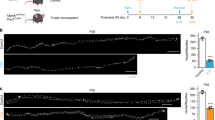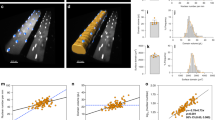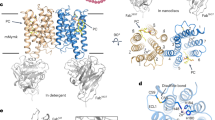Abstract
THE cell fusion technique of Harris1,2, involving the use of ultraviolet inactivated Sendai virus3, can be used to fuse differentiated cells with each other and with nondifferentiated cells. In some cases the hybrid cells form synkaryons capable of cell proliferation, but although some express surface antigens characteristic of the component cell nuclei4, none has yet been found to produce the “luxury” molecules5 characteristic of highly differentiated cells. This may be because conditions which favour cell proliferation are antagonistic to cell differentiation. In vitro differentiation of normal cells is usually observed only in very special conditions, of which cell concentration, cell to cell interactions and preconditioning of the medium or the supporting surface may be critical.
This is a preview of subscription content, access via your institution
Access options
Subscribe to this journal
Receive 51 print issues and online access
$199.00 per year
only $3.90 per issue
Buy this article
- Purchase on Springer Link
- Instant access to full article PDF
Prices may be subject to local taxes which are calculated during checkout
Similar content being viewed by others
References
Harris, H., and Watkins, J. F., Nature, 205, 640 (1965).
Harris, H., Proc. Roy. Soc., B, 166, 358 (1966).
Okada, Y., and Tadokoro, J., Exp. Cell Res., 26, 108 (1962).
Harris, H., Sidebottom, E., Grace, D. M., and Bramwell, M. E., J. Cell Sci., 4, 499 (1969).
Holtzer, H., and Abbott, J., in The Stability of the Differentiated State (edit. by Ursprung, H.) (Springer-Verlag, Berlin, Heidelberg, 1968).
Hauschka, S. D., in The Stability of the Differentiated State (edit. by Ursprung, H.) (Springer-Verlag, Berlin, Heidelberg, 1968).
Okazaki, K., and Holtzer, H., Proc. US Nat. Acad. Sci., 56, 1484 (1966).
Konigsberg, I. R., and Kupres, F. J., cited by Hauschka, S. D. (op. cit.).
Bolund, L., Ringertz, N. R., and Harris, H., J. Cell Sci., 4, 71 (1969).
Ringertz, N. R., Darzynkiewicz, Z., and Bolund, L., Exp. Cell Res., 56, 411 (1969).
Rigler, R., Acta Physiol. Scand., 67, Suppl., 267 (1966).
Yaffe, D., and Feldman, M., Develop. Biol., 11, 300 (1965).
Author information
Authors and Affiliations
Rights and permissions
About this article
Cite this article
CARLSSON, SA., SAVAGE, R. & RINGERTZ, N. Behaviour of Differentiated Hen Nuclei in the Cytoplasm of Rat Myoblasts and Myotubes. Nature 228, 869–871 (1970). https://doi.org/10.1038/228869a0
Received:
Issue Date:
DOI: https://doi.org/10.1038/228869a0
This article is cited by
-
Thymidine kinase, DNA synthesis and cancer
Molecular and Cellular Biochemistry (1976)
-
Heterokaryons in the analysis of genes and gene regulation
Humangenetik (1975)
Comments
By submitting a comment you agree to abide by our Terms and Community Guidelines. If you find something abusive or that does not comply with our terms or guidelines please flag it as inappropriate.



